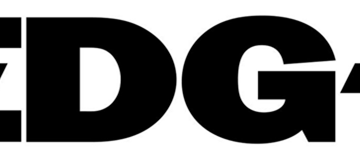Adam Zewe | MIT News
2025-05-01 00:00:00
news.mit.edu

The ambiguity in medical imaging can present major challenges for clinicians who are trying to identify disease. For instance, in a chest X-ray, pleural effusion, an abnormal buildup of fluid in the lungs, can look very much like pulmonary infiltrates, which are accumulations of pus or blood.
An artificial intelligence model could assist the clinician in X-ray analysis by helping to identify subtle details and boosting the efficiency of the diagnosis process. But because so many possible conditions could be present in one image, the clinician would likely want to consider a set of possibilities, rather than only having one AI prediction to evaluate.
One promising way to produce a set of possibilities, called conformal classification, is convenient because it can be readily implemented on top of an existing machine-learning model. However, it can produce sets that are impractically large.
MIT researchers have now developed a simple and effective improvement that can reduce the size of prediction sets by up to 30 percent while also making predictions more reliable.
Having a smaller prediction set may help a clinician zero in on the right diagnosis more efficiently, which could improve and streamline treatment for patients. This method could be useful across a range of classification tasks — say, for identifying the species of an animal in an image from a wildlife park — as it provides a smaller but more accurate set of options.
“With fewer classes to consider, the sets of predictions are naturally more informative in that you are choosing between fewer options. In a sense, you are not really sacrificing anything in terms of accuracy for something that is more informative,” says Divya Shanmugam PhD ’24, a postdoc at Cornell Tech who conducted this research while she was an MIT graduate student.
Shanmugam is joined on the paper by Helen Lu ’24; Swami Sankaranarayanan, a former MIT postdoc who is now a research scientist at Lilia Biosciences; and senior author John Guttag, the Dugald C. Jackson Professor of Computer Science and Electrical Engineering at MIT and a member of the MIT Computer Science and Artificial Intelligence Laboratory (CSAIL). The research will be presented at the Conference on Computer Vision and Pattern Recognition in June.
Prediction guarantees
AI assistants deployed for high-stakes tasks, like classifying diseases in medical images, are typically designed to produce a probability score along with each prediction so a user can gauge the model’s confidence. For instance, a model might predict that there is a 20 percent chance an image corresponds to a particular diagnosis, like pleurisy.
But it is difficult to trust a model’s predicted confidence because much prior research has shown that these probabilities can be inaccurate. With conformal classification, the model’s prediction is replaced by a set of the most probable diagnoses along with a guarantee that the correct diagnosis is somewhere in the set.
But the inherent uncertainty in AI predictions often causes the model to output sets that are far too large to be useful.
For instance, if a model is classifying an animal in an image as one of 10,000 potential species, it might output a set of 200 predictions so it can offer a strong guarantee.
“That is quite a few classes for someone to sift through to figure out what the right class is,” Shanmugam says.
The technique can also be unreliable because tiny changes to inputs, like slightly rotating an image, can yield entirely different sets of predictions.
To make conformal classification more useful, the researchers applied a technique developed to improve the accuracy of computer vision models called test-time augmentation (TTA).
TTA creates multiple augmentations of a single image in a dataset, perhaps by cropping the image, flipping it, zooming in, etc. Then it applies a computer vision model to each version of the same image and aggregates its predictions.
“In this way, you get multiple predictions from a single example. Aggregating predictions in this way improves predictions in terms of accuracy and robustness,” Shanmugam explains.
Maximizing accuracy
To apply TTA, the researchers hold out some labeled image data used for the conformal classification process. They learn to aggregate the augmentations on these held-out data, automatically augmenting the images in a way that maximizes the accuracy of the underlying model’s predictions.
Then they run conformal classification on the model’s new, TTA-transformed predictions. The conformal classifier outputs a smaller set of probable predictions for the same confidence guarantee.
“Combining test-time augmentation with conformal prediction is simple to implement, effective in practice, and requires no model retraining,” Shanmugam says.
Compared to prior work in conformal prediction across several standard image classification benchmarks, their TTA-augmented method reduced prediction set sizes across experiments, from 10 to 30 percent.
Importantly, the technique achieves this reduction in prediction set size while maintaining the probability guarantee.
The researchers also found that, even though they are sacrificing some labeled data that would normally be used for the conformal classification procedure, TTA boosts accuracy enough to outweigh the cost of losing those data.
“It raises interesting questions about how we used labeled data after model training. The allocation of labeled data between different post-training steps is an important direction for future work,” Shanmugam says.
In the future, the researchers want to validate the effectiveness of such an approach in the context of models that classify text instead of images. To further improve the work, the researchers are also considering ways to reduce the amount of computation required for TTA.
This research is funded, in part, by the Wistrom Corporation.
Upgrade your audio game with the Logitech for Creators Blue Yeti USB Microphone. With over 33,730 ratings and an impressive 4.6 out of 5 stars, it’s no wonder this is an Amazon’s Choice product. Recently, 5K+ units were purchased in the past month.
Available in five stunning colors: Teal, Silver, Pink Dawn, Midnight Blue, and Blackout, this microphone is perfect for creators looking to produce exceptional audio. Priced at only $84.99, it’s a deal you can’t afford to miss.
Elevate your recordings with clear broadcast-quality sound and explore your creativity with enhanced effects, advanced modulation, and HD audio samples. Order now for just $84.99 on Amazon!
Help Power Techcratic’s Future – Scan To Support
If Techcratic’s content and insights have helped you, consider giving back by supporting the platform with crypto. Every contribution makes a difference, whether it’s for high-quality content, server maintenance, or future updates. Techcratic is constantly evolving, and your support helps drive that progress.
As a solo operator who wears all the hats, creating content, managing the tech, and running the site, your support allows me to stay focused on delivering valuable resources. Your support keeps everything running smoothly and enables me to continue creating the content you love. I’m deeply grateful for your support, it truly means the world to me! Thank you!
|
BITCOIN
bc1qlszw7elx2qahjwvaryh0tkgg8y68enw30gpvge Scan the QR code with your crypto wallet app |
|
DOGECOIN
D64GwvvYQxFXYyan3oQCrmWfidf6T3JpBA Scan the QR code with your crypto wallet app |
|
ETHEREUM
0xe9BC980DF3d985730dA827996B43E4A62CCBAA7a Scan the QR code with your crypto wallet app |
Please read the Privacy and Security Disclaimer on how Techcratic handles your support.
Disclaimer: As an Amazon Associate, Techcratic may earn from qualifying purchases.



























![Majora's Mask Walkthrough – Bad Time Management [Part 39]](https://techcratic.com/wp-content/uploads/2025/09/1757202435_maxresdefault-360x180.jpg)






















![TouchDesigner tutorial[RealseseCamera][Particle][InteractiveArt]](https://techcratic.com/wp-content/uploads/2025/09/1757169488_maxresdefault-360x180.jpg)



![Nintendo DSi – Matte Black (Renewed) [video game]](https://techcratic.com/wp-content/uploads/2025/09/41I5o383cVL-360x180.jpg)


















































